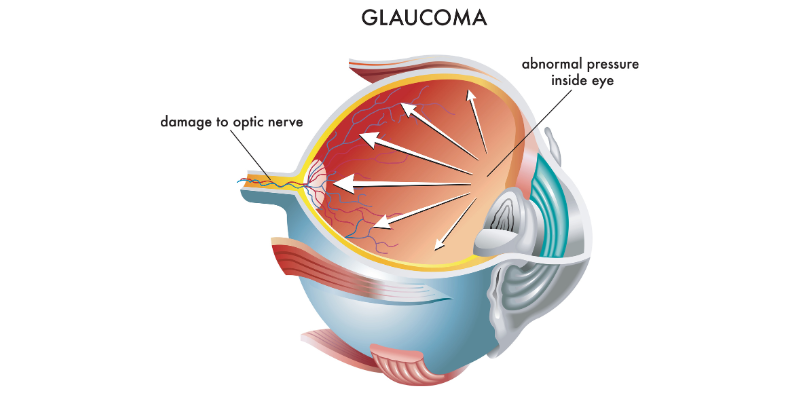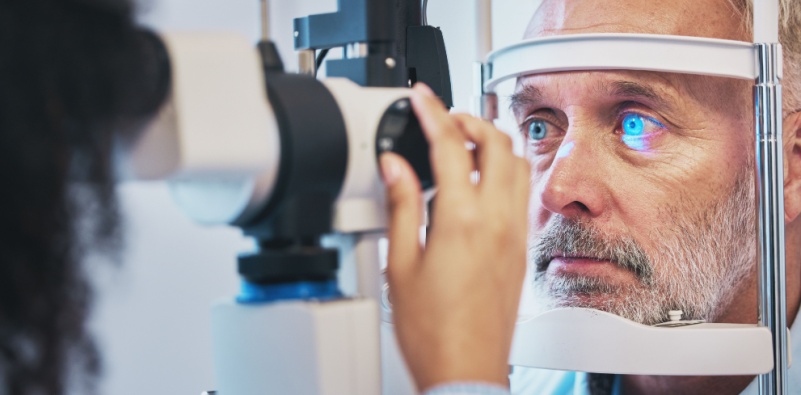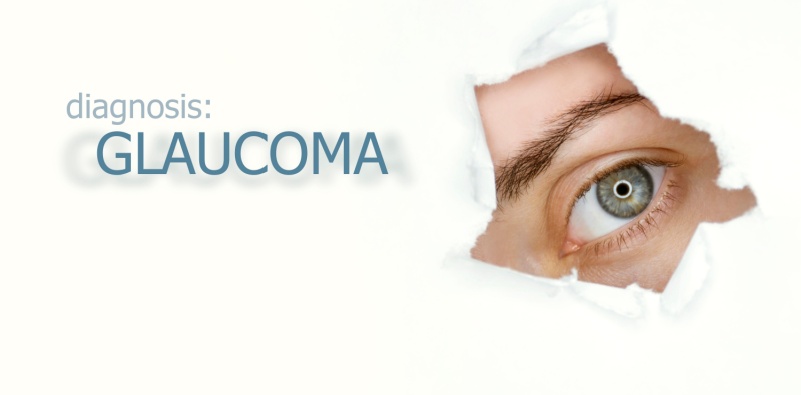Decoding Glaucoma With OCT
Glaucoma is a condition that can have serious consequences on your vision. It unfortunately affects a large proportion of the population, with studies showing around 480,000 people in the UK suffer from the most common form of this condition – open-angle glaucoma.
What is Glaucoma?

Glaucoma is a chronic condition that occurs when excess fluid builds up in the eye due to poor drainage. This increases the internal eye pressure, causing irreversible damage to the optic nerve, which, if undetected and untreated, can lead to vision loss and blindness.
What are the risk factors?
There are several risk factors associated with the development of glaucoma. Glaucoma is usually found among people who are:
- In upper age brackets, particularly over 60s
- Of Asian, African or Caribbean origin
- From a family with a history of glaucoma
- Are suffering from diabetes, short or long-sightedness or high blood pressure.
The different types of glaucoma
There are several different types of glaucoma. The most common type is primary open-angle glaucoma. Onset is slow but progressive due to the drainage channels in the eyes becoming gradually blocked.
Acute angle-closure glaucoma is less common and is caused by a sudden blockage, raising the pressure in the eye very quickly, causing symptoms and damage to occur rapidly.
Secondary glaucoma is caused by an underlying eye condition such as uveitis, and childhood glaucoma is a rare development caused by a genetic abnormality.
Glaucoma symptoms

Due to the slow, creeping nature of open-angle glaucoma, you might not be aware of any damage until it has significantly progressed, resulting in reduced peripheral vision.
Acute angle-closure glaucoma, however, will have symptoms that you must not ignore. It is considered a medical emergency if you are experiencing:
- intense eye pain and tenderness
- nausea/vomiting
- red eyes and headaches
- seeing rings around lights
- blurred vision.
Test for glaucoma

Regular eye exams (at least every 2 years) are vital, especially for those over 60 – or annually if there’s a family history of glaucoma. While damage is irreversible, early detection can slow down the progression of symptoms and can help manage the condition.
A glaucoma eye test may include an OCT (optical coherence tomography), which is a non-intrusive 3D scan of the eye. The OCT takes multiple images, layering them together to provide optometrists with an instant image of the back of the eye, including the retina. An OCT can detect glaucoma in its earliest stages, up to 5 years before a standard eye test can.
Your local opticians, Whitley Bay
At Robinson Optometrists, we want our patients’ eyes to be in the best shape possible. If you haven’t had an eye test recently or have any concerns, please get in touch for advice or to book an appointment.

